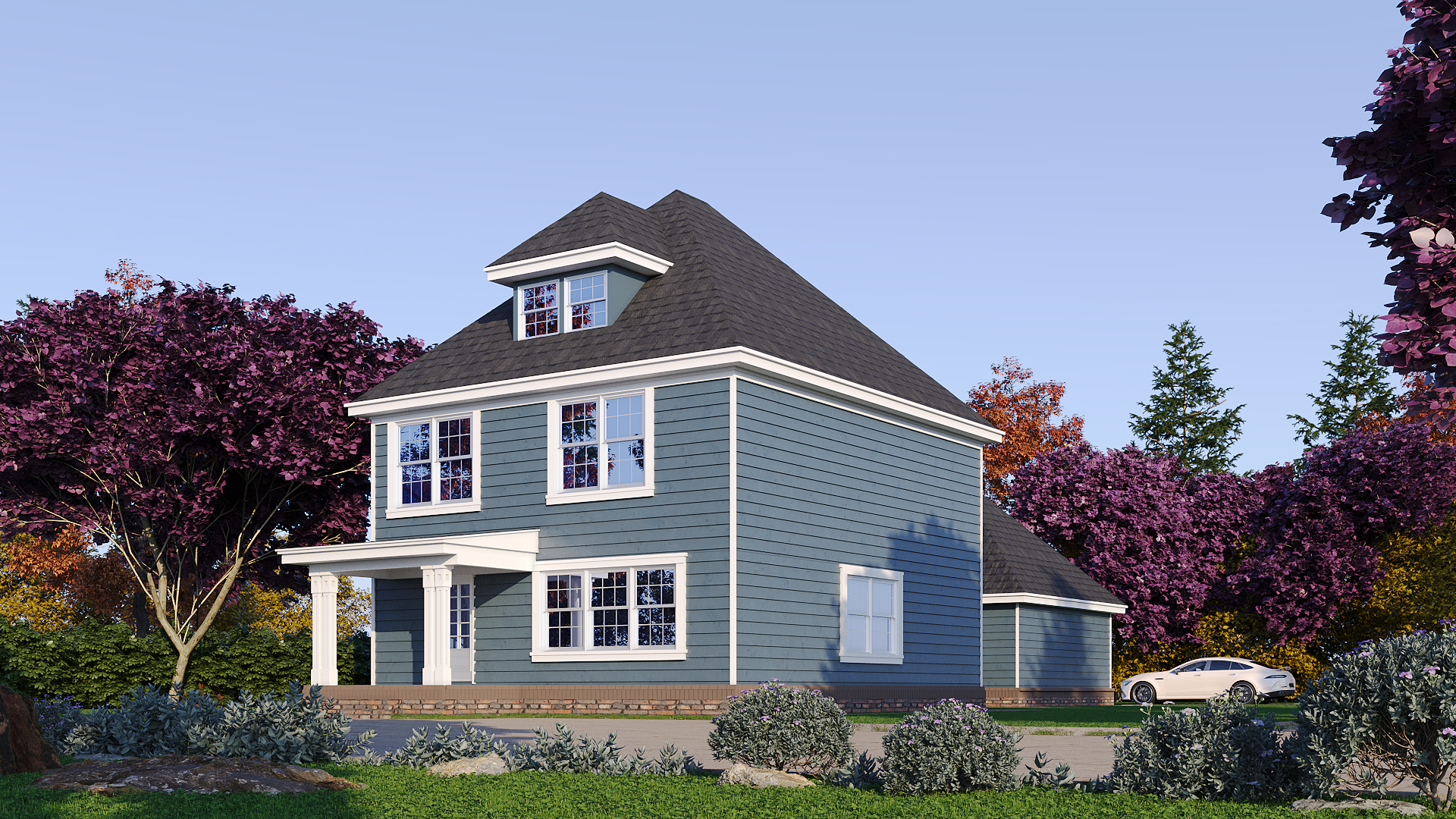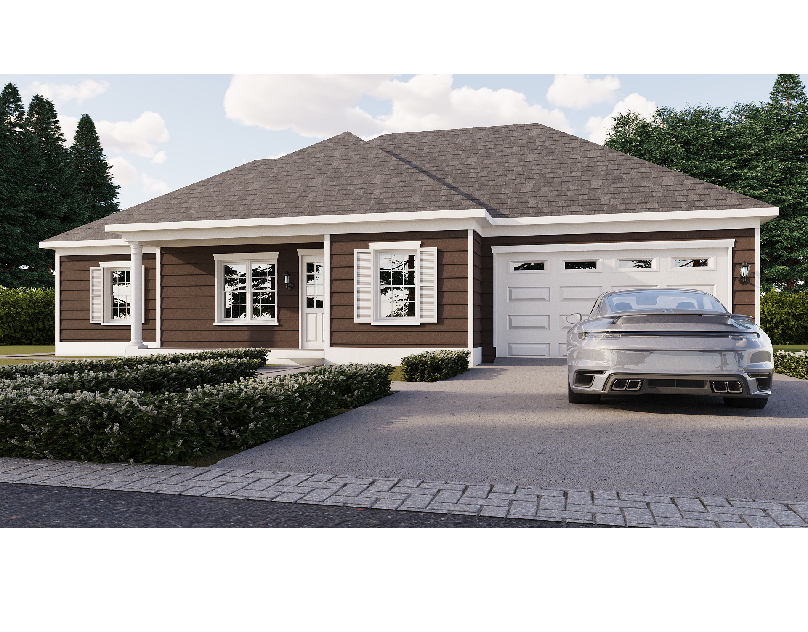
Embracing 3D Rendering of Large Projects For Architects and Real Estate.
In the modern architecture and real estate industries, the shift from traditional design and presentation methods to advanced digital tools is not just a trend but a necessity. Among these tools, 3D rendering has emerged as a game-changer, especially for large-scale projects. Architects and real estate developers are increasingly embracing 3D rendering to enhance the way projects are visualized, communicated, and brought to life. This article explores the key reasons behind this widespread adoption and the transformative impact 3D rendering has on large-scale projects.
1. Enhanced Visualization and Realistic Depiction
One of the most compelling reasons architects and real estate developers turn to 3D rendering is its ability to create highly detailed and realistic depictions of buildings and landscapes. With 3D rendering, stakeholders can visualize complex architectural designs with clarity, long before construction begins. For large projects, where the scale and complexity can be overwhelming, these lifelike visuals offer a concrete representation that helps decision-makers better understand the project.
Key Benefits:
- Precise Detailing: 3D rendering allows for intricate detailing of both exterior and interior aspects of a project, from the texture of the materials to the lighting and shadows.
Client Satisfaction: By offering clients a realistic preview of their future project, architects and developers can ensure that expectations are aligned early on, reducing the chances of disappointment during construction.
2. Improved Communication Among Stakeholders
Large construction projects involve a variety of stakeholders, from investors and clients to architects, engineers, and contractors. Each party has different priorities and technical knowledge, making effective communication critical. Traditional 2D drawings or blueprints often fail to convey the full scope and feel of a project, leading to misinterpretations and delays.
3D renderings, however, provide a common visual language that everyone can understand. This not only improves communication but also fosters collaboration among all parties involved. The ability to view a project from multiple angles, examine specific design elements, and virtually “walk” through the space ensures that everyone is on the same page.
Key Benefits:
- Clarity for Non-Technical Stakeholders: Investors and clients who may not have a technical background can grasp the full concept of the project, reducing confusion.
Smoother Collaboration: Engineers and contractors can better visualize potential construction challenges and collaborate more effectively with architects to resolve issues before they arise.
3. Cost-Effective Decision Making
3D rendering is not only a visual tool but also a practical one. In the context of large projects, making design changes late in the construction process can lead to exorbitant costs and delays. With 3D rendering, developers and architects can experiment with different designs, materials, and layouts in the planning stage, avoiding costly alterations once construction begins.
By creating a digital version of the project, architects can identify potential design flaws early and make adjustments with ease. Additionally, developers can experiment with various scenarios, such as different lighting setups or landscape designs, to determine the most cost-effective and visually appealing option.
Key Benefits:
- Early Problem Detection: 3D renderings help uncover potential design flaws, saving time and money in the long run.
Material and Design Testing: Architects and developers can test various materials, textures, and design elements digitally, eliminating the cost of physical prototypes.

4. Marketing and Presentation Tool
For real estate developers, one of the biggest advantages of 3D rendering is its effectiveness as a marketing tool. Large projects, especially residential and commercial developments, require a lot of pre-sales or pre-leasing to secure financing and generate interest. 3D renderings provide a way to showcase the final project even before the first brick is laid.
Potential buyers or tenants can get a clear sense of what their future home or office space will look like, and developers can use these visuals to promote the project through digital marketing channels, presentations, and brochures. Whether it’s a fly-through animation of the entire project or detailed renderings of specific units, these assets significantly enhance marketing efforts.
Key Benefits:
- Attract Investors and Buyers: 3D renderings offer a stunning visual representation that entices investors and buyers, giving them confidence in the project’s potential.
Pre-Sales Advantage: Developers can secure sales or leases early by showcasing future spaces with 3D models, even before construction starts.
5. Streamlined Approval Process
For large-scale architectural projects, navigating the approval process from regulatory bodies and local governments can be challenging. Detailed 3D renderings can make this process smoother by providing a comprehensive view of how the building will impact the surrounding area, how it will look within the neighborhood, and whether it adheres to zoning regulations.
In some cases, city planning departments and other governing bodies may require developers to present visual models during the approval process. The realism and accuracy of 3D renderings make it easier for officials to assess and approve projects, reducing delays in obtaining permits and moving forward with construction.
Key Benefits:
- Faster Approvals: Renderings make it easier for local governments to assess and approve projects, leading to quicker permit acquisition.
Regulation Adherence: Developers can ensure their project complies with local codes and zoning laws by visualizing the final design in detail.
6. Facilitates Sustainability and Green Building
Sustainability is an increasingly important factor in the design and construction of large projects. With growing awareness of environmental impact, architects and developers are under pressure to create buildings that are energy-efficient and environmentally friendly. 3D rendering aids in the planning of sustainable projects by enabling architects to simulate energy use, natural light, ventilation, and other key factors that contribute to green building design.
By using 3D software, architects can optimize the placement of windows, design efficient HVAC systems, and ensure that the building meets LEED certification standards. This focus on sustainability not only benefits the environment but also appeals to clients and investors who prioritize eco-friendly practices.
Key Benefits:
- Green Design Optimization: Architects can test and refine sustainable designs to reduce energy consumption and environmental impact.
Eco-Friendly Appeal: Developers can market their projects as environmentally conscious, attracting clients who prioritize sustainability.
7. Virtual Reality Integration
Another reason architects and real estate developers are embracing 3D rendering is the rise of virtual reality (VR) in architectural design. With VR, 3D renderings can be transformed into fully immersive experiences where clients, stakeholders, and potential buyers can explore the project as if they were walking through the actual building.
This interactive experience enhances the way people understand and engage with a project, especially for large developments where spatial understanding is crucial. VR tours of buildings, landscapes, and interior spaces give a level of engagement that static renderings and blueprints simply cannot provide.
Key Benefits:
- Immersive Experiences: Clients and stakeholders can walk through virtual versions of large projects, gaining a better understanding of space and design.
Enhanced Client Engagement: The interactive nature of VR experiences captivates clients, making them more likely to invest in or approve the project.
Conclusion
The adoption of 3D rendering by architects and real estate developers for large projects is revolutionizing the way these industries operate. From enhanced visualization and improved communication to cost savings and effective marketing, the benefits of 3D rendering are vast and transformative. As technology continues to evolve, the role of 3D rendering in large-scale architectural and real estate projects will only expand, providing new opportunities for creativity, collaboration, and success. Whether it’s for planning, marketing, or client engagement, 3D rendering is an indispensable tool for modern architects and developers.


